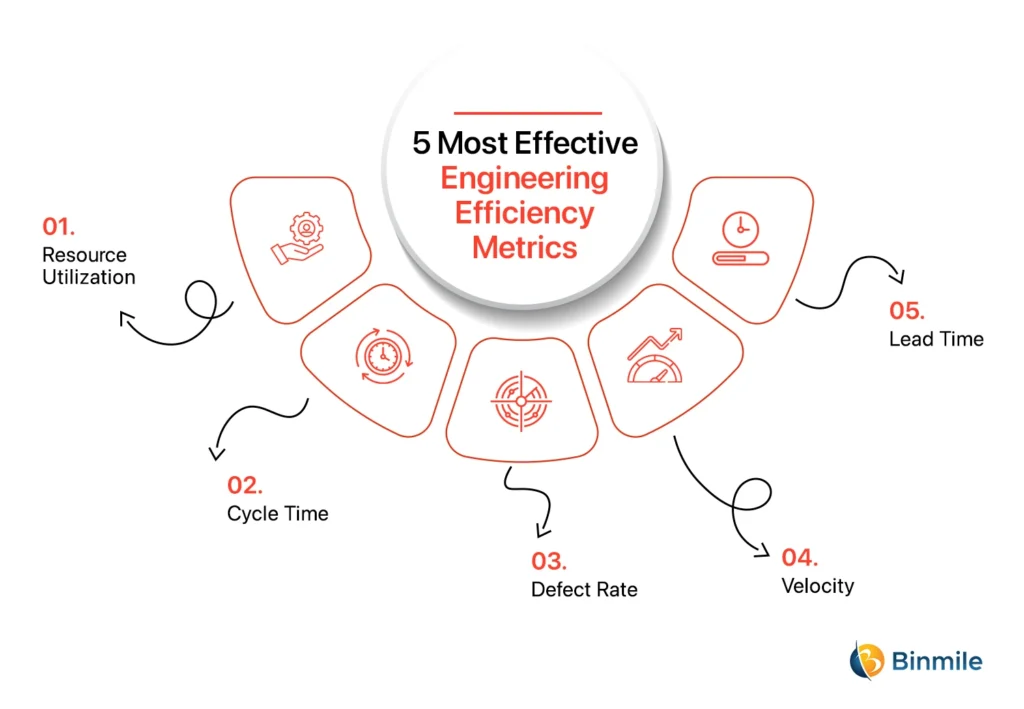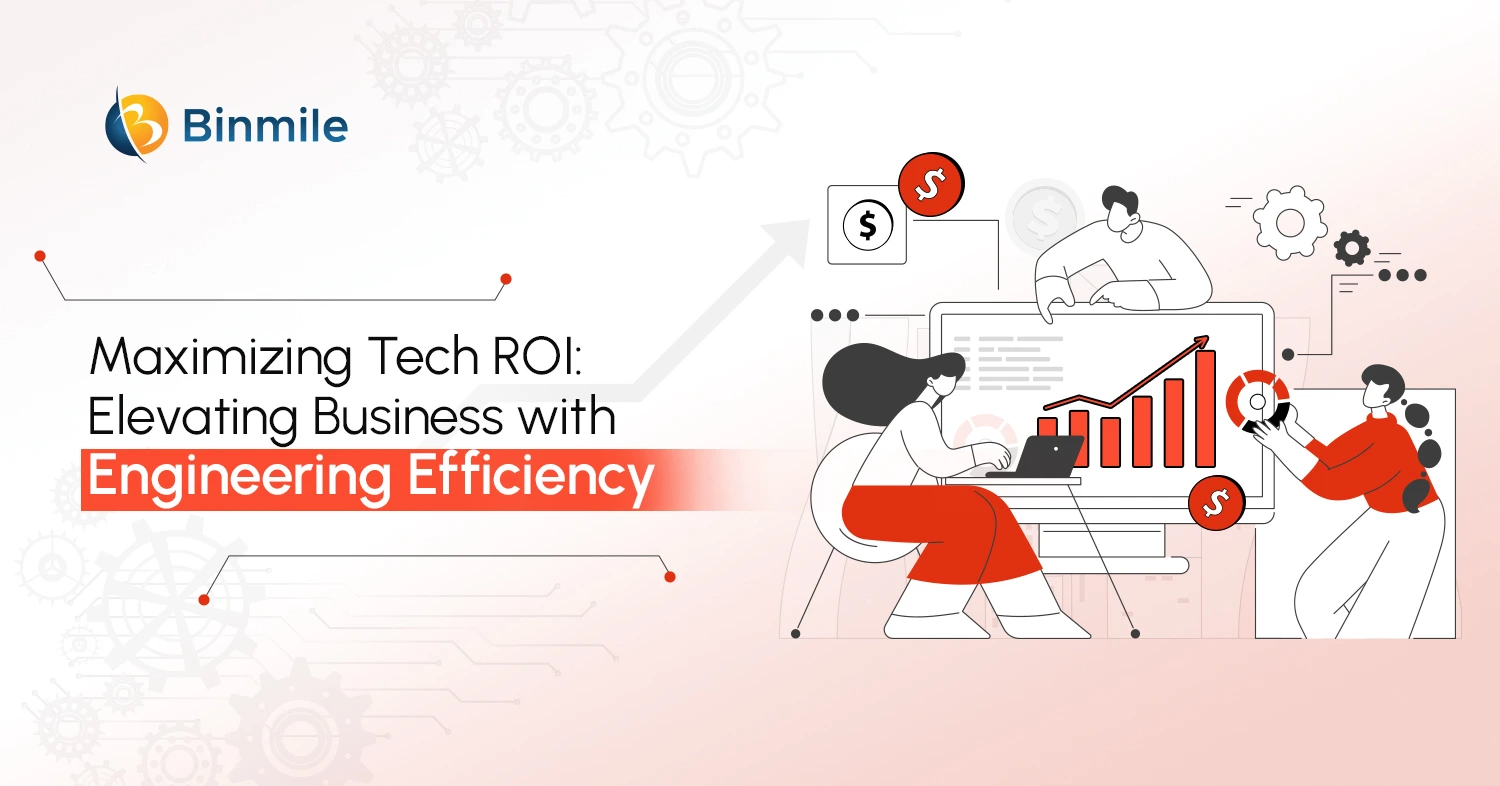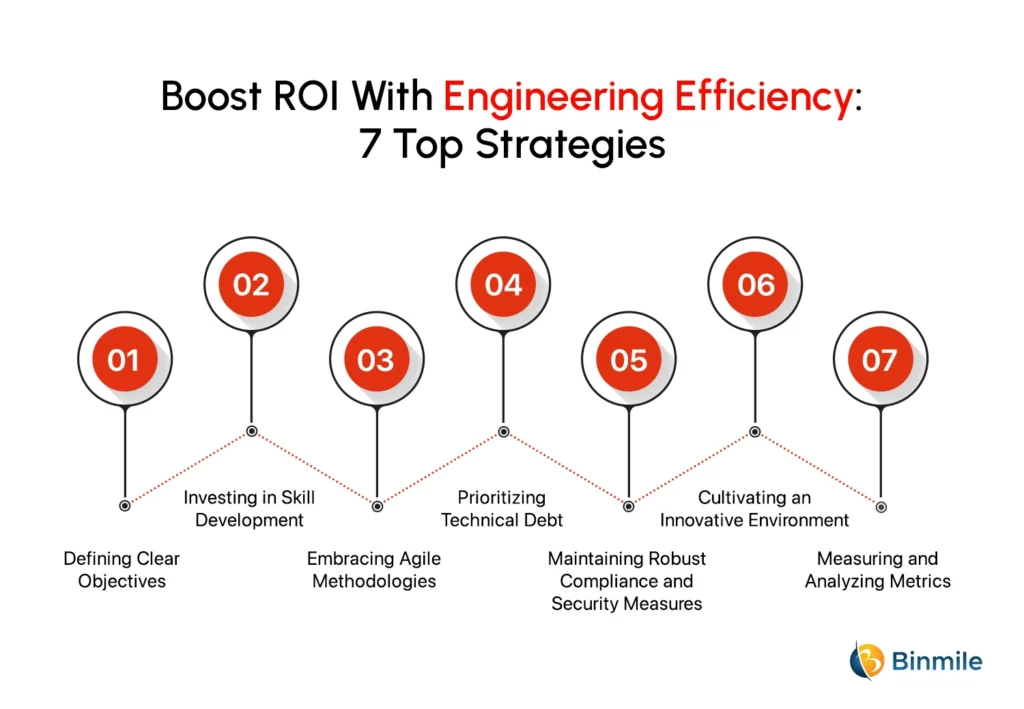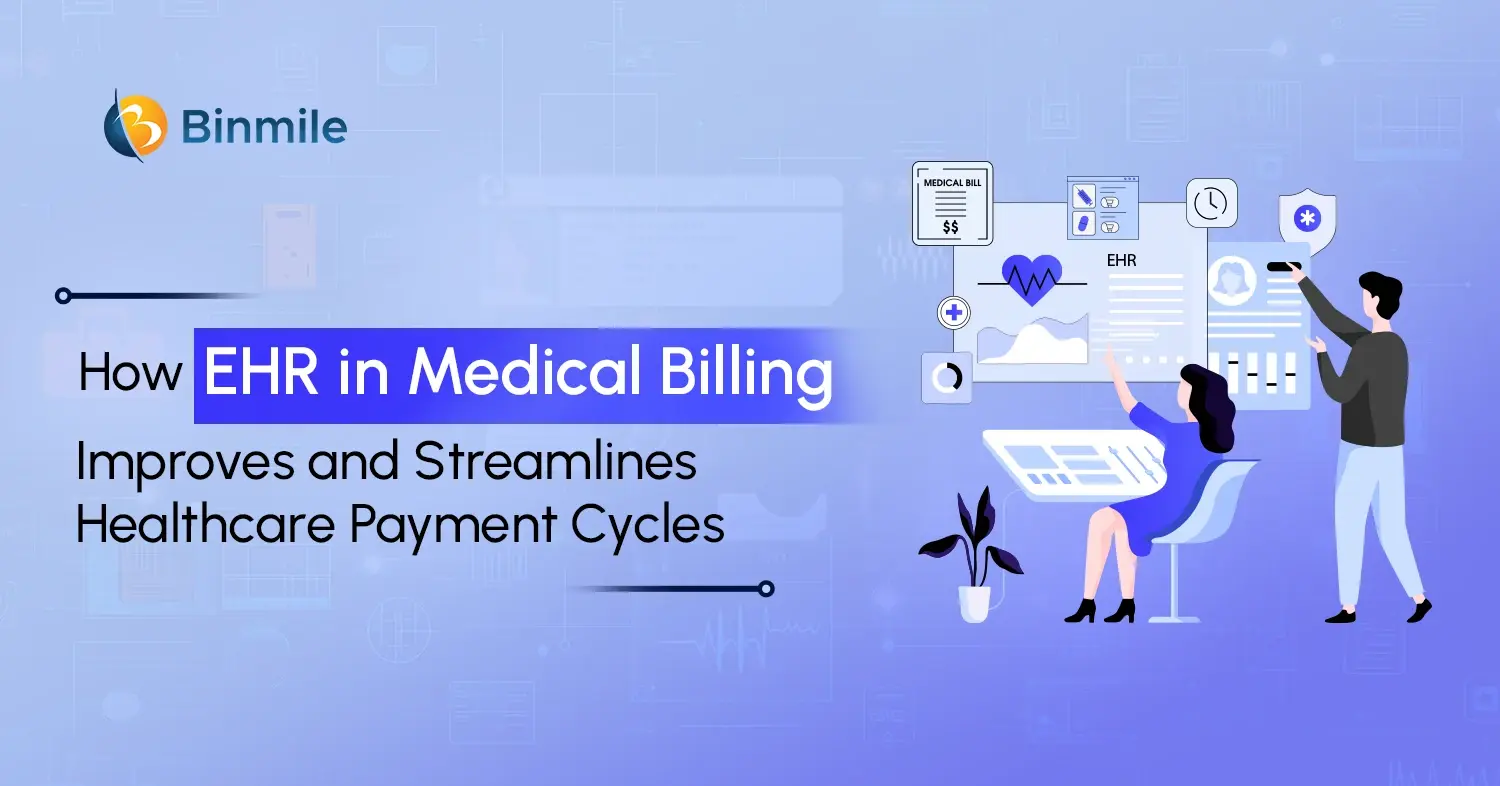- 5 Most Effective Engineering Efficiency Metrics
- 7 top strategies to improve engineering efficiency
- Boost ROI With Engineering Efficiency
- Custom software development companies
- digital transformation company
- engineering efficiency
- engineering efficiency metrics
- impact of engineering efficiency on ROI
- Improve Engineering Efficiency
- Software Development Services
Imagine two top software development companies, equal in size and resources, embark on a mission to develop a groundbreaking product. One company meticulously fine-tunes its engineering efficiency and development processes, encourages cross-team collaboration, and prioritizes skill development. The other takes a more traditional approach, sticking to rigid timelines and ignoring technical debt. Fast forward a year, and the first company not only delivers a superior product ahead of schedule but also saves on costs and resources. The second company struggles with delays, bug fixes, and mounting expenses in their custom software development services.
This dichotomy illustrates the tangible impact of engineering efficiency on ROI. One must remember that innovation is the currency and agility is the key to success and every business’s bottom line hinges on these. Engineering effectiveness isn’t just another corporate buzzword; it’s the linchpin holding together the complex machinery of tech-driven businesses. It’s about optimizing your engineering teams, streamlining processes, and fine-tuning the engine of innovation. In this blog post, we explore the essential strategy that can redefine how your organization approaches technology investments and capitalizes on engineering prowess. In addition, we will also share engineering efficiency metrics to help you drive your business forward with a sharper focus on ROI through engineering effectiveness.
Boost ROI With Engineering Efficiency: 7 Top Strategies
Let us discuss some of the key principles and strategies that can help your organization enhance its tech ROI through improved engineering practices:
1. Defining Clear Objectives
The journey toward engineering effectiveness begins with setting clear, measurable objectives. These objectives must resonate with your organization’s overarching business goals. By creating a precise roadmap, you provide your engineering teams with a compass to navigate the ever-changing tech landscape.
- Clearly define how engineering objectives contribute to broader company objectives.
- Ensure that engineering goals are specific, measurable, achievable, relevant, and time-bound (SMART).
- Establish concrete KPIs for engineering teams and software development services teams to track progress.
- Monitor and adjust objectives as needed to maintain alignment with evolving business priorities.
2. Investing in Skill Development
Your engineers are your most valuable assets. To boost engineering effectiveness, invest in their skill development relentlessly. Facilitate continuous learning, offer comprehensive training, and provide the necessary resources. Emphasize to them how improving the skills of your engineering teams directly impacts productivity, quality, and ultimately, ROI.
- Encourage engineers to stay updated with the latest IT industry trends and emerging technologies.
- Offer in-house training programs tailored to your technology stack and industry.
- Ensure access to cutting-edge tools, libraries, and resources necessary for skill development.
- Track the correlation between skills development and performance metrics.
3. Embracing Agile Methodologies
Agile isn’t just for software development services; it’s a philosophy that can transform your organization. Agile methodologies such as Scrum and Kanban bring rapid adaptability, customer-centricity, and efficient resource utilization into your tech projects, amplifying engineering effectiveness.
- Highlight its relevance in various tech-related projects beyond software.
- Discuss how Agile methodologies reduce time-to-market and increase customer satisfaction.
- Provide actionable steps for adopting Agile practices within engineering teams and share tips for overcoming common challenges during the transition to Agile.
4. Prioritizing Technical Debt
Technical debt, lurking in outdated code, unresolved issues, and inefficient processes, can become a significant hindrance to engineering effectiveness. Allocate resources judiciously to pay down this debt, maintaining long-term efficiency.
- Explain how technical debt accumulates and its impact on ROI.
- Provide a structured approach to identifying and addressing the debt.
- Offer insights into resource allocation strategies to balance debt reduction with new development.
5. Maintaining Robust Compliance and Security Measures
Outline steps for integrating compliance standards and stringent security methods into your engineering processes, thus shielding you from costly breaches and penalties.
- Discuss the significance of complying with industry-specific regulations and standards.
- Offer best practices for securing software and data assets.
- Highlight the cost-effectiveness of preventive security measures compared to incident response costs.
6. Cultivating an Innovative Environment
Innovation is the heartbeat of engineering effectiveness. Create an environment that nurtures innovation by allocating time for “innovation sprints” and hackathons. Empower your engineers to explore creative projects beyond their regular responsibilities.
- Explain how innovation contributes to ROI by driving digital product development, enhancements, and new revenue streams.
- Provide practical examples of innovation initiatives, such as 20% time or innovation challenges.
- Showcase how innovation can lead to cost savings, increased market share, and enhanced customer satisfaction.
7. Measuring and Analyzing Metrics
Data-driven decision-making is at the core of engineering effectiveness. Implement Key Performance Indicators (KPIs) to monitor your engineering teams’ performance. Regularly analyze these metrics to uncover areas for refinement of your engineering or software development processes. In addition, encourage teams to provide feedback and suggestions for improvement, and be open to making necessary changes to optimize efficiency.
- Emphasize that data-driven insights provide a foundation for informed decision-making.
- Offer best practices for collecting, analyzing, and interpreting these metrics.
- Share strategies for using metric analysis to drive ongoing process improvements.
5 Most Effective Engineering Efficiency Metrics
Engineering Efficiency metrics are the compass that helps organizations navigate the waters of engineering excellence. Here are four of the most effective metrics for assessing engineering efficiency:

- Resource Utilization: Tracks how efficiently resources like equipment, materials, and facilities are used to build software products or complete projects.
- Cycle Time: It measures the time it takes to complete a specific task, feature, or project. Shortening cycle times indicates improved efficiency in delivering value to customers.
- Defect Rate: It quantifies the number of bugs, issues, or defects identified in a given project or period during software testing or software quality audit. Lower defect rates lead to higher efficiency in producing high-quality software.
- Velocity: A Scrum metric that measures the amount of work a development team completes during a sprint. When there’s a consistent or increasing velocity it means an efficient and predictable delivery of the product or services.
- Lead Time: It is to calculate the time it takes from the initiation of a task or feature request to its completion. Shortening lead times streamlines workflows and accelerates time-to-market.
Improve Engineering Efficiency: Get More Results From Less Efforts!
Improving business engineering efficiency involves optimizing processes and strategies to achieve better results. Here are five steps to help you enhance efficiency:
- Process Analysis and Mapping: Begin by thoroughly analyzing your current business or more specifically digital engineering processes. Create process maps to visually represent each step. Identify bottlenecks, redundancies, and areas where processes can be streamlined.
- Technology Integration: Invest in appropriate technology solutions that align with your business engineering goals. This might include project management software, AI automation tools, or data analytics platforms. Ensure that these tools are integrated seamlessly into your workflow.
- Employee Training and Development: Invest in the skills and knowledge of your workforce. Provide training and development opportunities to keep employees up-to-date with the latest engineering practices and technologies. Empowered and skilled employees are more likely to contribute to efficiency improvements.
- Data-Driven Decision-Making: Utilizing data modernization tactics to make informed decisions. Collect and analyze relevant data to identify trends, opportunities, and areas for improvement. Use this information to guide your engineering efforts more effectively.
- Organization’s Process Optimization: Analyze your current engineering processes to identify bottlenecks or inefficiencies. You also need to define specific efficiency goals that align with your business objectives. This leads to a streamlined workflow with everyone knowing the goal and their role in achieving it.
Optimizing Engineering Efficiency for Unparalleled ROI
Engineering effectiveness is like your North Star to maximize ROI. As you implement the strategies and invest in your engineering teams, you’ll not only witness enhanced efficiency and superior quality but also fortify your bottom line, setting the stage for sustained success in the dynamic tech industry. The journey of engineering effectiveness is a perpetual one, an investment that keeps on giving as your business continues to thrive.
By defining clear objectives, investing in skills, fostering collaboration, and embracing agile methodologies, your organization can achieve higher efficiency, superior quality, and ultimately, a stronger bottom line. Keep in mind that engineering effectiveness is not a one-time effort but a continuous commitment to improvement. As you prioritize and invest in engineering effectiveness, you’ll position your business for long-term success in the ever-evolving tech industry. However, changing traditional work and thought patterns overnight can be challenging but not an impossible task. For additional help, you can seek out assistance from a digital transformation company that can help you with actionable insights to boost ROI and to edge out your competitors.
Frequently Asked Questions
An Engineering Effectiveness Team is a specialized group within an organization focused on enhancing the productivity and efficiency of engineering teams. Their goal is to provide the right tools, processes, and best practices that help engineers deliver high-quality software faster and more reliably. By streamlining workflows and removing obstacles, these teams play a critical role in optimizing engineering outcomes.
Greater engineering efficiency leads to faster product delivery, improved code quality, and reduced operational costs. By ensuring that resources are used optimally, engineering teams can focus on innovation and deliver value to customers more rapidly.
Engineering effectiveness is crucial because it directly impacts the speed, quality, and cost of software development. With a dedicated engineering effectiveness team, organizations can reduce technical debt, prevent bottlenecks, and improve the overall developer experience, leading to faster innovation and better product quality.










